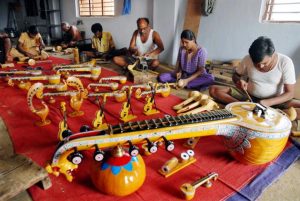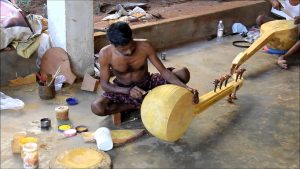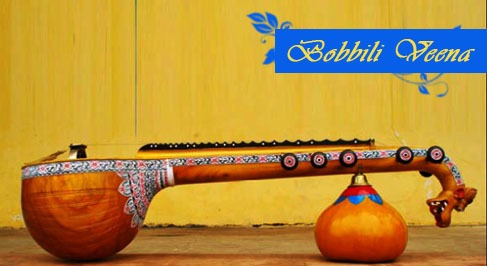Bobbili Veena is one of the many instruments of ancient times that has constantly been catching the eye of numerous people around. This Veena also known as Saraswati Veena originated in Bobbili, Vizianagaram district, Andhra Pradesh and hence it is called as Bobbili Veena. In 17th century playing Veena was considered to be meritorious during gregarious events and that is the time when Veena was brought into the making in the Bobbili Kingdom established by Pedda Rayudu.
Sarvasidhi Acchanna is known for inventing the Bobbili Veena during of reigns of the of Bobbili Kingdom’s 12th king named Raja Ravu Venkata Kumar Krishna Ranga Rao. Continuing the tradition, the grandson of Sarvasidhi Acchanna, Sarvasidhi Achutanarayana makes the Bobbili Veena even at the age of 76. Along with the making, he also teaches his next generation, this art. But he says that notwithstanding its fame for its unique treble, the instrument no more enjoys its former status. “The professional Veena is vanishing, with not many people willing to learn it. Hence, we are now manufacturing the miniature versions which are gifted as mementos and memorabilia, to save the dying art.”

The making of this epic musical instrument involves a bell metal for frets of the Veena with lion’s head carved at one end. These Veenas are usually made of single piece of jackfruit’s wood hence they are also called as ‘Ekanda Veena’. The making of Bobbili Veena is easier said than done. On an average to make a perfect Bobbili Veena it takes 20 days, with the work starting from selecting a good quality jackfruit wood. Then the bridge is created called ‘Gori’-the round part and it is covered by a wooden sheet. To give an attractive look, a variety of designs are carved on it. To the round body, a wide fretted neck is attached. And then to increase the duration of the note played, pumpkin is used as a resonator after hollowing it and drying it for 3 days. It is attached to the neck.
To transfer the sound to pumpkin, a pipe is screwed to the top of the pumpkin and connected to Dandi. Initially, elephant’s tusk was used to do the decorative work which is now replaced by plastic. The toughest task while making the Veena is to embed the 24 metal(usually brass) fret to a hard piece of wax, to tie the string to them and also it has to be ensured that the tones of each string are in synchronization. If all the pieces are put in proper places then what results is an epic instrument of Goddess Saraswati named Bobbili Veena which produces a sound that can make one feel satisfied and cheerful.

This instrument has even obtained a GI status in March 2012. Also, India is known for its finest art work. Well, this is just another sample which is considered to be a highly popular and divine instrument. As a result, of all these things, Bobbili Veena has its own reputation whenever ancient Indian instruments are talked about.
-Shreeyash





